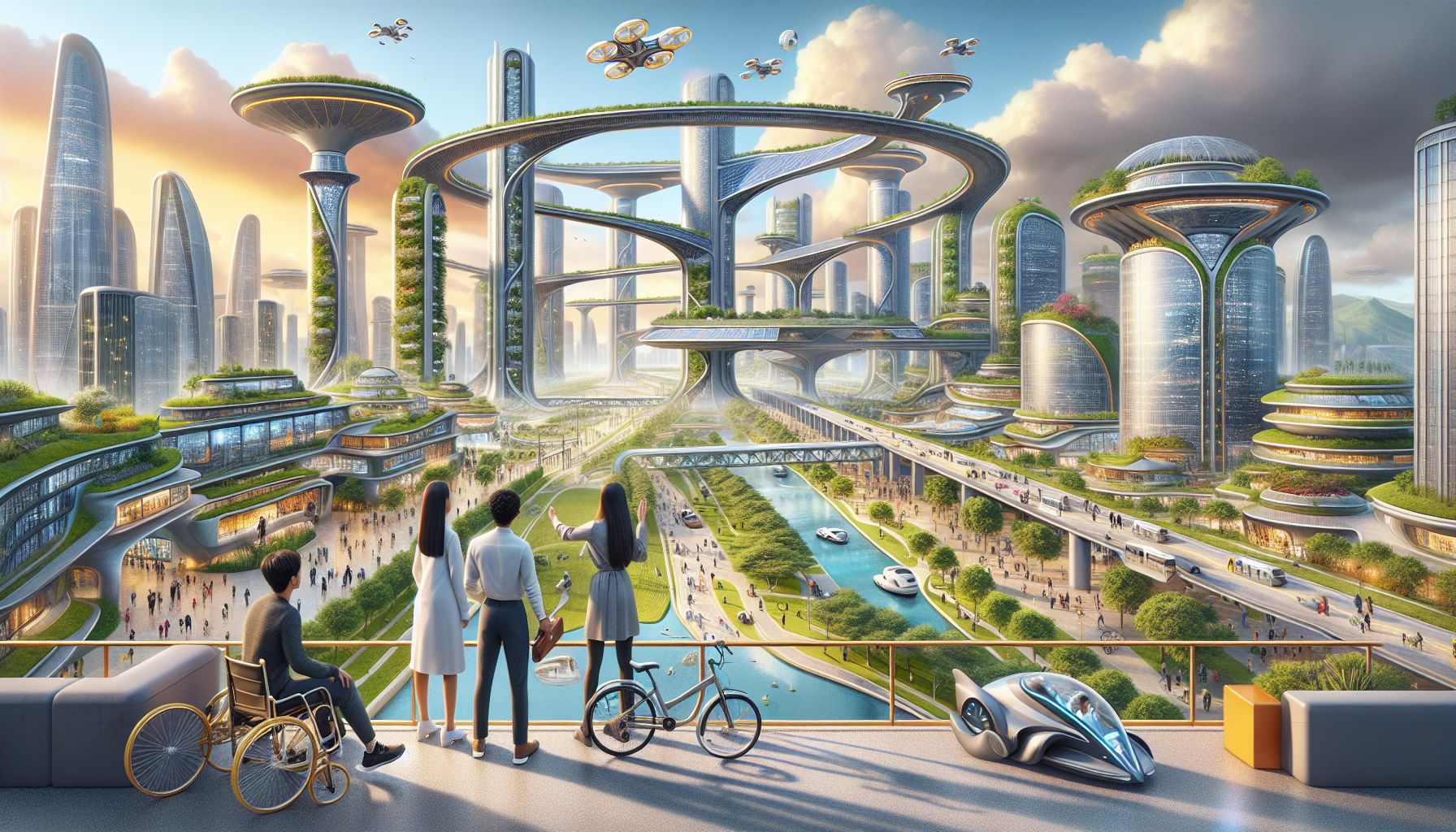📌 Let’s explore the topic in depth and see what insights we can uncover.
⚡ “What if I told you that the future of our planet could hinge on a single girder or concrete piling? Welcome to the world of sustainable urban engineering, where city skylines and environmental survival are now intertwined like never before.”
As we look to the future, it’s clear that the cities we inhabit need to evolve. Climate change, pollution, and urban sprawl are just a few of the challenges that modern city planners face. But what if the solutions to these problems were right under our noses? Or, more accurately, right under our feet? Welcome to the intersection of engineering and sustainability, where civil engineers are taking the lead in creating green, eco-friendly cities. These aren’t just your ordinary cities; they’re sustainable cities, designed with the future in mind. They’re the literal bridges to our future, and the engineers who design them are the masterminds behind it all.
🏗️ The Rise of Sustainable Cities

"Engineering Sustainable Cities: Bridging Today with Tomorrow"
Sustainable cities, also known as eco-cities or green cities, are urban areas designed to have as minimal an impact on the environment as possible. They’re built with renewable energy sources, efficient waste management systems, and green spaces that help to offset carbon emissions. Behind these sustainable cities are engineers, working tirelessly to design and implement solutions that address the pressing environmental challenges we face. Here’s how:
Renewable Energy Sources
Engineers harness the power of the sun, wind, and water to provide clean, renewable energy to cities. Solar panels, wind turbines, and hydropower plants are all examples of engineering feats that help cities reduce their reliance on fossil fuels.
Efficient Waste Management Systems
One man’s trash is another man’s treasure, especially in a sustainable city. Engineers design innovative waste management systems that not only reduce the amount of waste that ends up in landfills but also convert waste into valuable resources.
Green Spaces
These aren’t just nice-to-have features in a city; they’re essential for maintaining air quality and reducing urban heat. Engineers play a crucial role in designing parks, rooftop gardens, and other green spaces that help to absorb CO2 and cool the city.
🌉 The Role of Bridges in Sustainable Cities
🧩 As for Bridges, they’re more than just physical structures that connect two points; they’re symbols of connection, progress, and innovation. In the context of sustainable cities, bridges play a critical role in facilitating sustainable transportation and reducing the carbon footprint of cities. Engineers design bridges that encourage walking, cycling, and the use of public transport. These bridges often incorporate features like bike lanes, pedestrian walkways, and even green spaces. Some bridges are even designed to generate renewable energy, like the Solar Wind Energy Tower in Arizona, which produces electricity from solar and wind power. With their ability to facilitate sustainable transportation and even generate renewable energy, bridges are truly the pathways to a greener future.
🌳 Green Engineering: The Future of Sustainable Cities
Green engineering, or sustainable engineering, is a growing field that focuses on designing systems and processes that are environmentally friendly and sustainable. It’s about more than just reducing harm; it’s about actively improving the environment. Green engineers work in various sectors, from energy to waste management to transportation. They design solutions that not only address the environmental challenges of today but also set us up for a greener, more sustainable future.
Some exciting developments in green engineering include:
Smart Grids
🧩 As for These, they’re electricity networks that use digital technology to manage the supply and demand of electricity more efficiently.
Vertical Farming
This innovative farming method involves growing crops in vertically stacked layers, reducing the amount of land and water needed for agriculture.
Water Purification Systems
🧩 As for Engineers, they’re developing new ways to purify and recycle water, reducing our reliance on freshwater sources. 🧩 As for These, they’re just a few examples of how green engineering is shaping the future of sustainable cities.
🧭 Conclusion
As we look to the future, it’s clear that the role of engineering in sustainable cities is more critical than ever. 🧩 As for Engineers, they’re at the forefront of designing solutions that will help us transition to a more sustainable way of living. From renewable energy sources to efficient waste management systems to green spaces, engineers are building the bridges to our sustainable future. And with their innovative solutions, they’re not just addressing the environmental challenges of today; they’re setting us up for a greener, more sustainable tomorrow. So, the next time you cross a bridge, remember: it’s not just a pathway from one point to another. It’s a symbol of progress, innovation, and our commitment to a sustainable future. And that’s something we can all be proud of.
📡 The future is unfolding — don’t miss what’s next!
